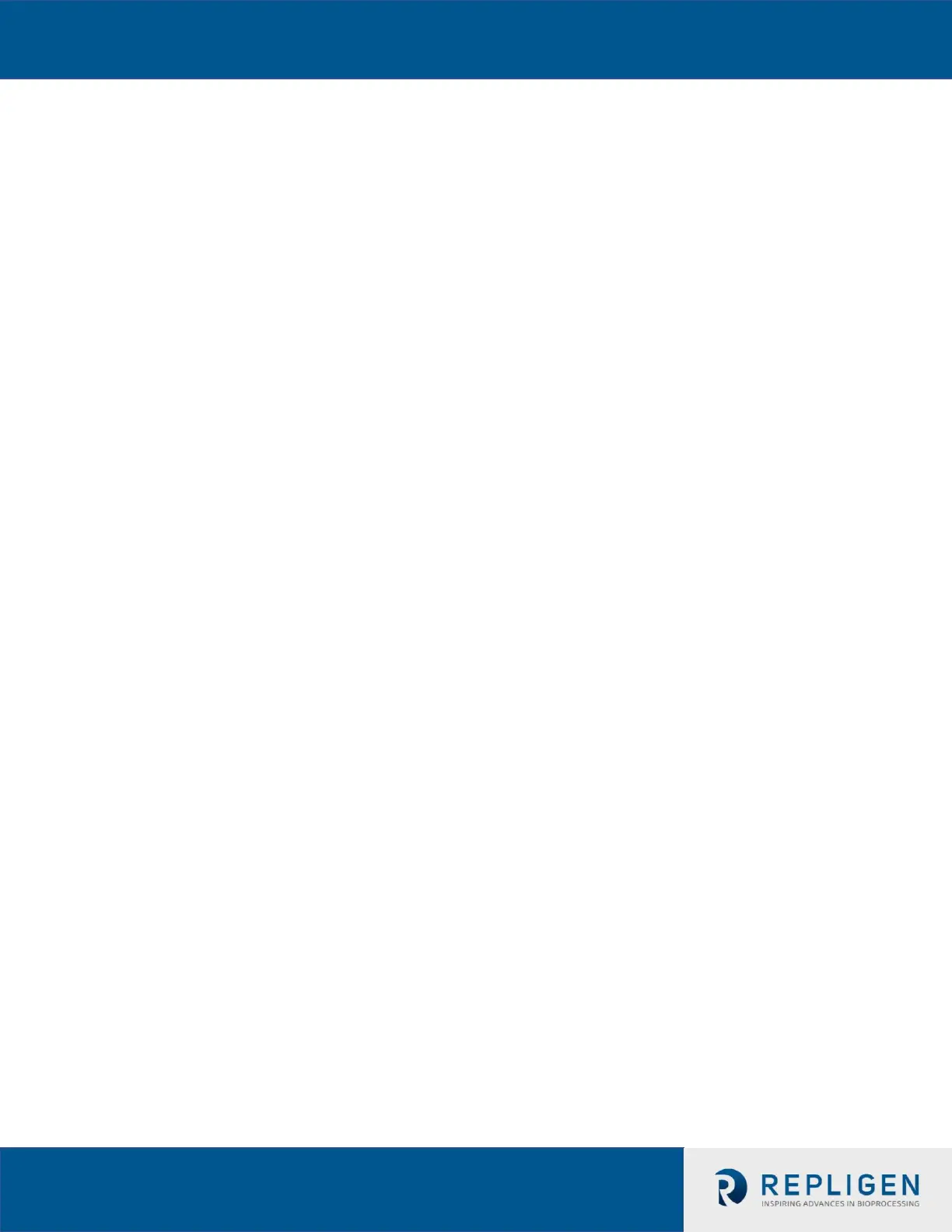77
System-stop
If the XCell™ ATF is stopped by the System-stop (one of 2 blue buttons on either the P-Box or E-
Box), and the System-stop is reset, the XCell™ ATF will not restart until the master has to reset
Start/stop to 0 and then set back to 1. System-stop is indicated visually with the buttons
illuminated and indicated via profibus by OutputPage0.System Stop Active (%DB31.DBX366.5)
Calibration Process
When not running, calibration activities can be performed.
The master sends input parameters pages 3 and 4 to XCell™ ATF or calibrate locally. As in
Remote Set-up, the Start/Stop parameter needs to be “0”.
Repligen recommends having a service technician perform calibration activities. Once loop
calibration is initiated, it must complete the calibration process. There is currently no means to
disable an enabled calibration without completing the process via remote commands.
Only one input loop shall be calibrated at a time. Each loop shall be calibrated in its entirety by
itself, without enabling (or initiating) the calibration of another loop.
The process of calibration is a 2-point linear scaling process, where a technician first confirms all
required utilities, external pressure gauge and loop wiring is connected. The following steps are
performed:
1) An enable bit is momentarily asserted. Controller is enabled in calibration mode for a
particular analog input.
2) Pneumatic devices are set to produce a minimum setting. The pressure in the system
approaches the minimum value commanded. Pressure gauge reading is allowed to
stabilize.
3) The pressure gauge reading is provided to the controller. A minimum capture bit is
momentarily asserted.
4) Pneumatic devices are set to produce a maximum setting. The value on the pressure
gauge is allowed to stabilize.
5) The pressure gauge reading is provided to the controller. A maximum capture bit is
momentarily asserted.
6) Once both minimum and maximum points are captured, the linear scaling calculation
can be performed by the PLC. This calculation is initiated by setting an accept bit
(momentarily asserted). Controller performs the linear scaling calculation and resets
the controller’s internal calibration enable bit.
Calibration Example
Technician calibrates the P2 pressure sensor.
1) Assert enable bit:
a. Set “SendingDataPage” = 3
b. Set InputPage3.P2_Cal_Enable = 1 until the OutputPage4.P2_Cal_Enable bit is
received.
i. Wait for the “RequestedDataPage” to be equal to 4; since cycling through output
data pages is recommended.
ii. Examine OutputPage4.P2_Cal_Enable. When true…
c. Reset InputPage3.P2_Cal_Enable = 0.
d. Controller is enabled in calibration mode for P2 analog input.
